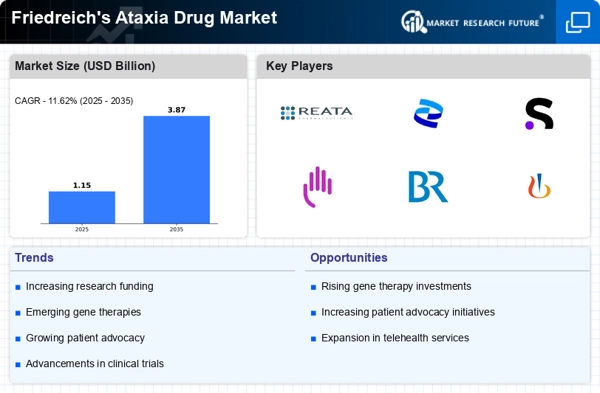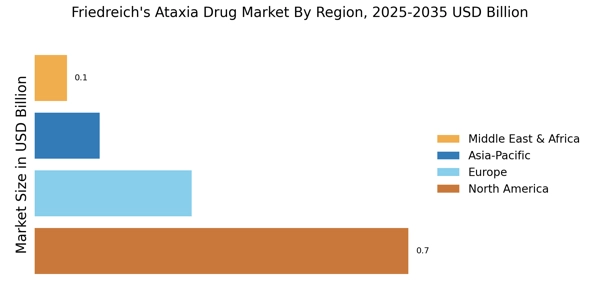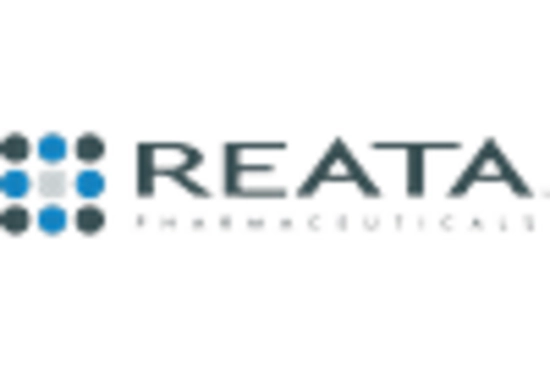The Friedreich's Ataxia Drug Market is characterized by a dynamic competitive landscape, driven by a combination of innovation, strategic partnerships, and a focus on patient-centric solutions. Key players such as Reata Pharmaceuticals (US), Pfizer (US), and Sanofi (FR) are actively shaping the market through their distinct operational strategies. Reata Pharmaceuticals (US) has positioned itself as a leader in developing novel therapies, emphasizing the importance of clinical trials and regulatory approvals to enhance its product pipeline. Meanwhile, Pfizer (US) is leveraging its extensive global reach and established distribution networks to expand its presence in emerging markets, thereby increasing accessibility to its treatments. Sanofi (FR), on the other hand, is focusing on strategic collaborations with research institutions to foster innovation and accelerate drug development, which collectively influences the competitive dynamics of the market.
In terms of business tactics, companies are increasingly localizing manufacturing and optimizing supply chains to enhance efficiency and reduce costs. The Friedreich's Ataxia Drug Market appears moderately fragmented, with several players vying for market share. However, the collective influence of major companies is significant, as they drive advancements in research and development while also addressing the complexities of regulatory environments across different regions.
In August 2025, Reata Pharmaceuticals (US) announced the initiation of a pivotal Phase 3 clinical trial for its lead drug candidate, which aims to evaluate its efficacy in a broader patient population. This strategic move is crucial as it not only reinforces Reata's commitment to advancing treatment options but also positions the company to potentially capture a larger market share upon successful trial outcomes. The emphasis on rigorous clinical testing underscores the importance of evidence-based approaches in gaining regulatory approval and market acceptance.
In September 2025, Pfizer (US) unveiled a partnership with a leading biotechnology firm to co-develop a new gene therapy aimed at addressing the underlying genetic causes of Friedreich's Ataxia. This collaboration is indicative of Pfizer's strategy to integrate cutting-edge technologies into its product offerings, thereby enhancing its competitive edge. By focusing on gene therapy, Pfizer is likely to tap into a niche market that could yield substantial long-term benefits, aligning with the growing trend towards personalized medicine.
In July 2025, Sanofi (FR) expanded its research capabilities by establishing a new innovation hub dedicated to rare diseases, including Friedreich's Ataxia. This initiative reflects Sanofi's strategic focus on fostering innovation through collaboration and investment in research. By creating a specialized environment for developing treatments for rare diseases, Sanofi aims to streamline its drug development processes and enhance its portfolio, which may lead to a stronger competitive position in the market.
As of October 2025, the competitive trends in the Friedreich's Ataxia Drug Market are increasingly defined by digitalization, sustainability, and the integration of artificial intelligence in drug development processes. Strategic alliances are becoming more prevalent, as companies recognize the value of collaboration in navigating complex regulatory landscapes and accelerating innovation. Looking ahead, it is anticipated that competitive differentiation will evolve, shifting from traditional price-based competition to a focus on innovation, technological advancements, and the reliability of supply chains. This transition may ultimately lead to a more sustainable and patient-centric approach in the Friedreich's Ataxia Drug Market.


















Leave a Comment